Disclosure: This post may contain affiliate links, which means I may earn a commission if you click on the link and make a purchase.
This Alfajores recipe are a classic South American cookie. Silky smooth manjar blanco (dulce de leche) is sandwiched in between two melt-in-your mouth short bread cookies. Roll the edges in powdered sugar in the style of Peru. Serve them with a cup of homemade hot chocolate or matcha latte.
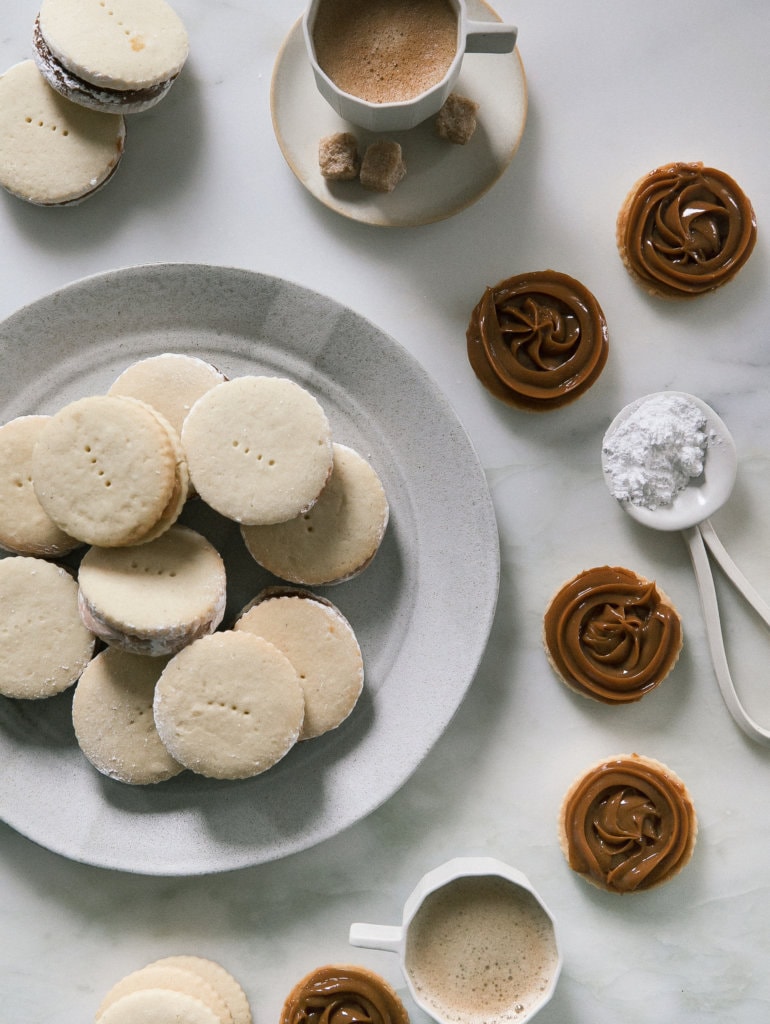
Alfajores de Maicena. If you’re unfamiliar consist of a shortbread cookie sandwich filled with dulce de leche (Peruvians call it manjar blanco) in the center. The cookies are melt-in-your mouth and the dulce de leche is creamy with a hint of cinnamon–so good!
These cookies have some flour, corn starch and powdered sugar (which obviously has corn starch in it). And added egg yolk gives it a nice richness (though, it’s not necessary) and since I was feeling fancy, I used some vanilla paste, which I use incredibly sparingly since it’s so expensive (but has recently gone down in price). If you don’t have it, skip it!
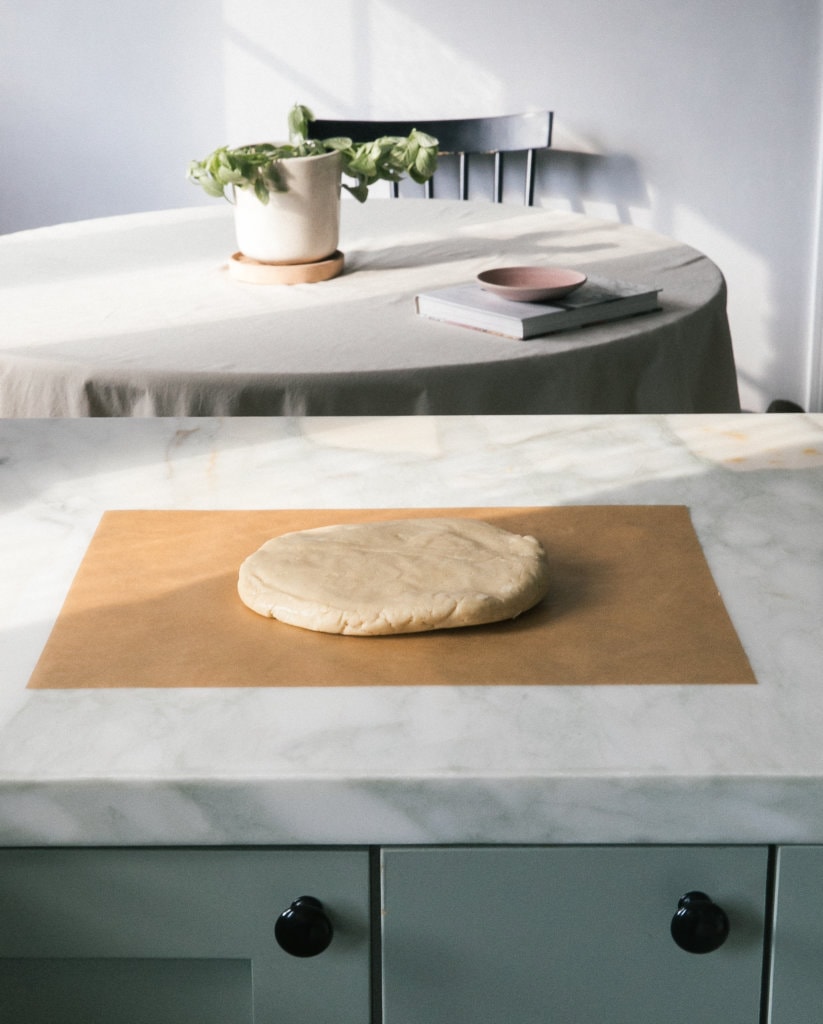
Ingredients You’ll Need for Alfajores
- Cornstarch – This is what gives these cookies the softest texture.
- Powdered sugar – Since this is part cornstarch we’re using this to sweeten and soften the cookie.
- Butter – I love the flavor of good butter in this recipe.
- Vanilla – I like using vanilla paste or good vanilla extract. The flavor really comes out in the flavor of the cookie.
- Egg yolk – This adds a bit or richness to the dough that tastes amazing.
For the rest of the ingredients, please refer to the recipe card below!
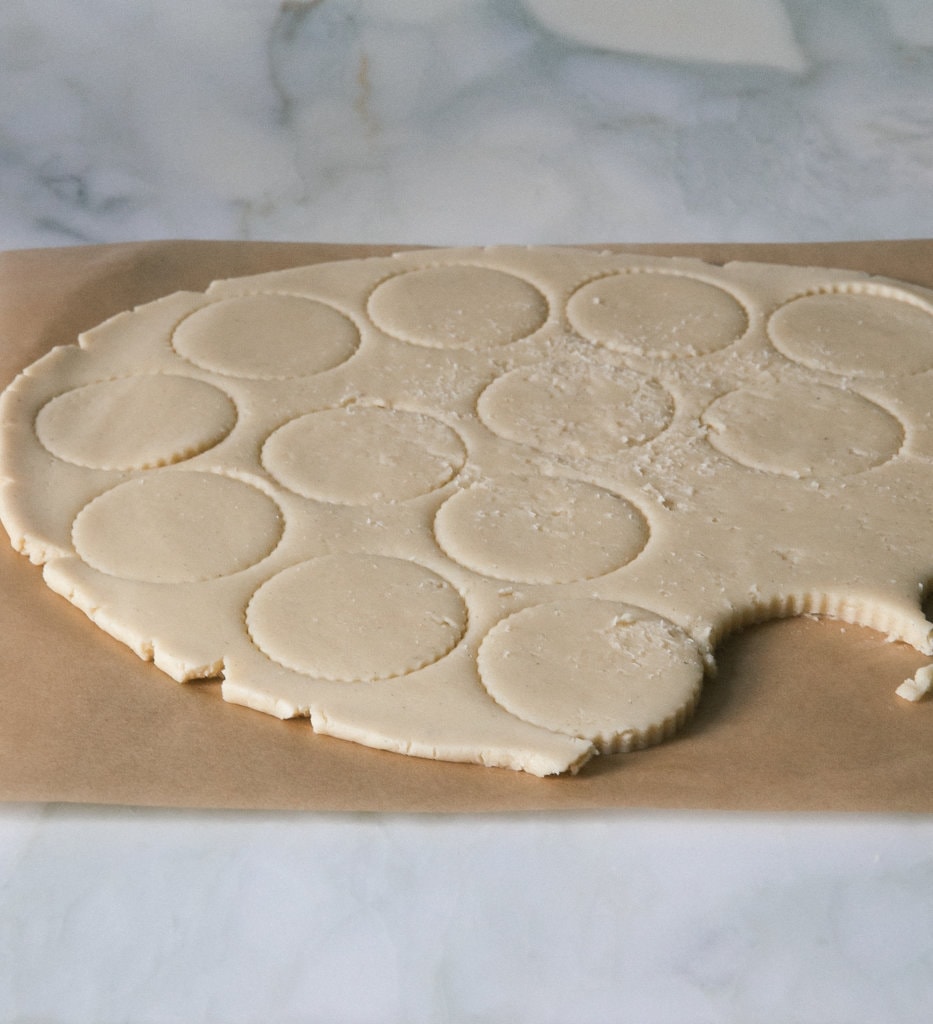
Alfajores Vary From Country to Country in Latin America
I took to IG stories last week to ask about these cookies from different countries in Latin America/South America and this is what I found out! (Honestly this was so interesting to me.):
- Argentina – In Argentina they’re typically made with all corn starch and the sides are rolled in shredded coconut.
- Chile – It varies depending on the part of Chile, but some of the cookies are a bit thicker and there are times when nuts and meringue are folded into the mix. Meringue honestly sounds super delicious. Some people dunk the entire cookie in chocolate–yum!
- Bolivia – In Bolivia, the alfajores are a cross between Argentinan-style and Peruvian-style. They are mixed with all-purpose flour and rolled in coconut.
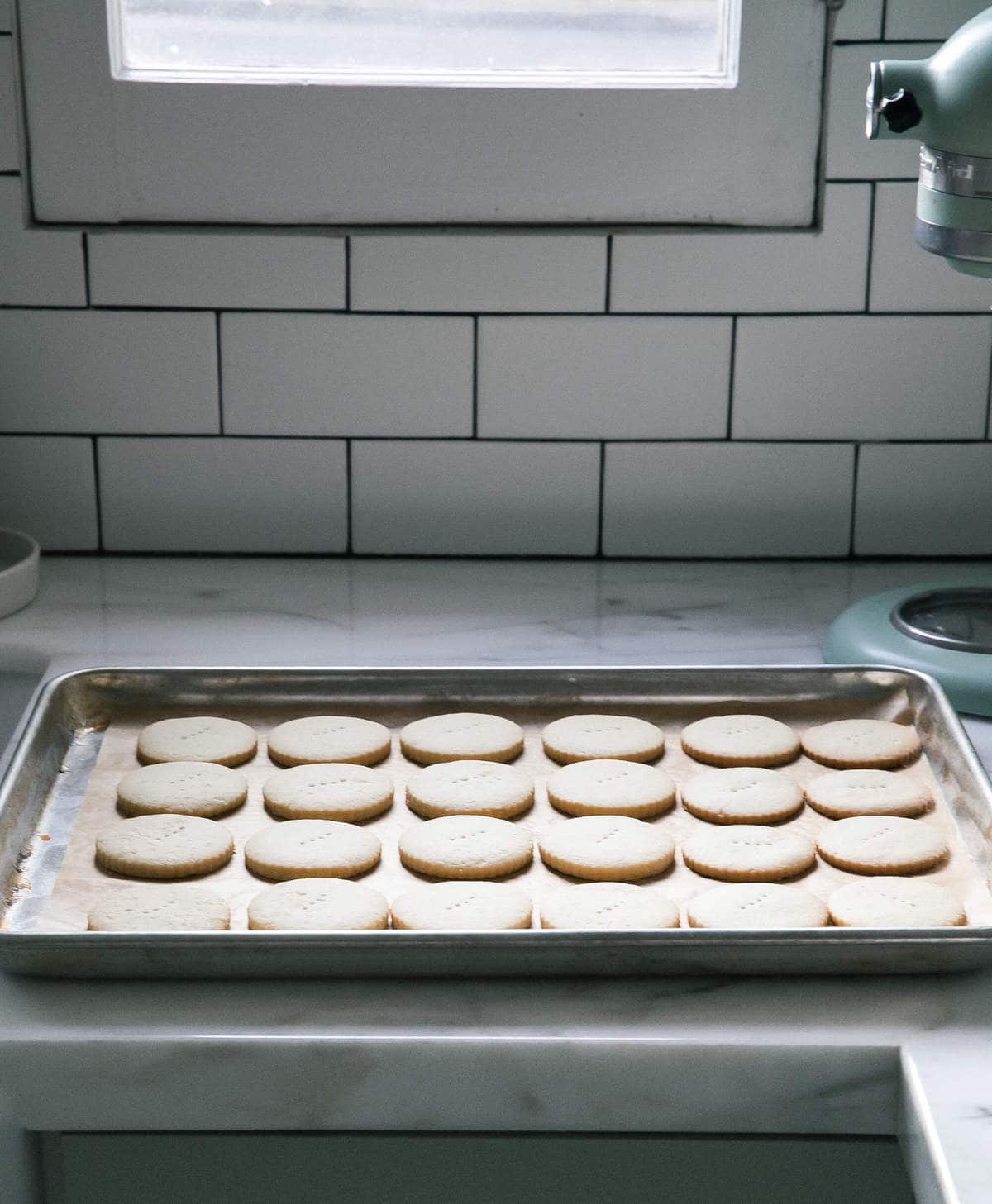
Tips for the Cookie Dough
Chilling Time – This alfajores dough needs to be refrigerated for about an hour or up to 3 days. It works much better when the moisture is evenly distributed throughout (what resting in the fridge does).
Use Different Cookie Cutters – You can make mini alfajores by using a 1 1/2-inch cookie cutter. For a larger size, use a 3-inch cookie cutter. Feel free to use ones that are different shapes too! You could even make them in style of these Salted Caramel Linzer Cookies!
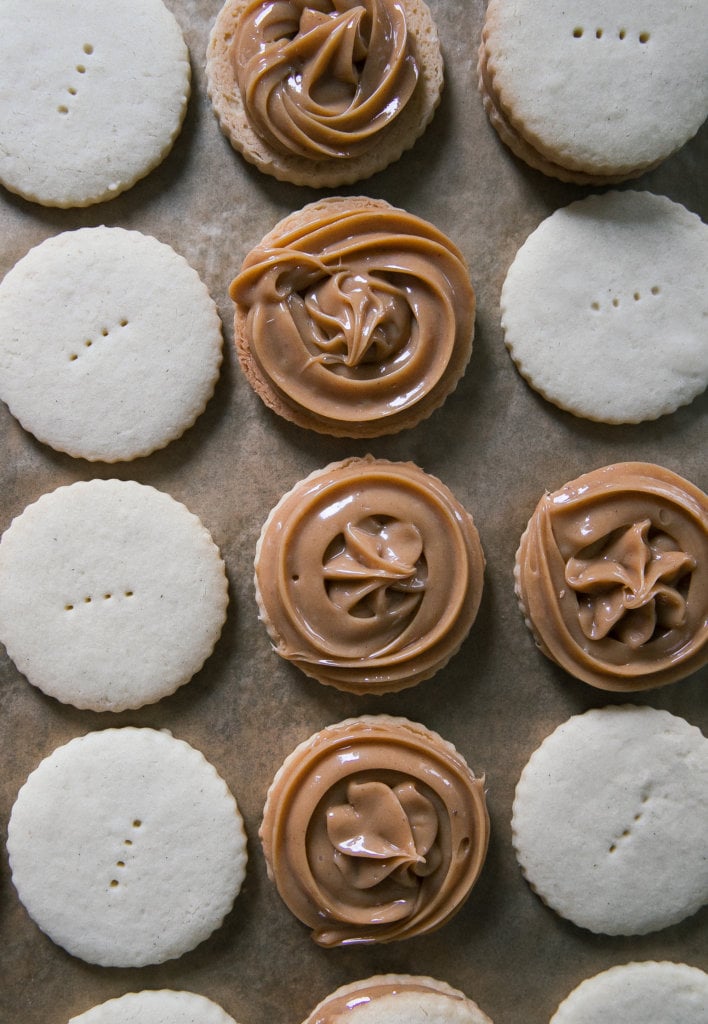
How to Make Alfajores (Peruvian Style)
- Make the manjar blanco. Whichever avenue you choose (there are two options below!), they’ll both be delicious. I really enjoy the method in the oven because it’s super easy.
- Whisk together the dry ingredients. In this recipe, we have all-purpose flour, corn starch, powdered sugar and kosher salt.
- Beat the butter and vanilla extract/paste. I love emulsifying the fat with the extract; it really takes on the flavor.
- Add the egg yolk (optiona). The egg yolks gives a lovely richness to this cookie dough. If you don’t have it, skip it!
- Pour in the dry ingredient mixture and combine.
- Wrap it in plastic wrap and chill. This dough will be SUPER soft so it needs to chill in the fridge.
- Roll out the dough. Flour your rolling pin and surface and stamp out the cookies.
- Bake the cookies! Until super blond. You don’t want them to be lightly golden brown or medium golden brown. To achieve that melt-in-your mouth quality, you need to bake them until set.
- Fill them with the manjar blanco/dulce de leche.
- Roll the sides in powdered sugar.
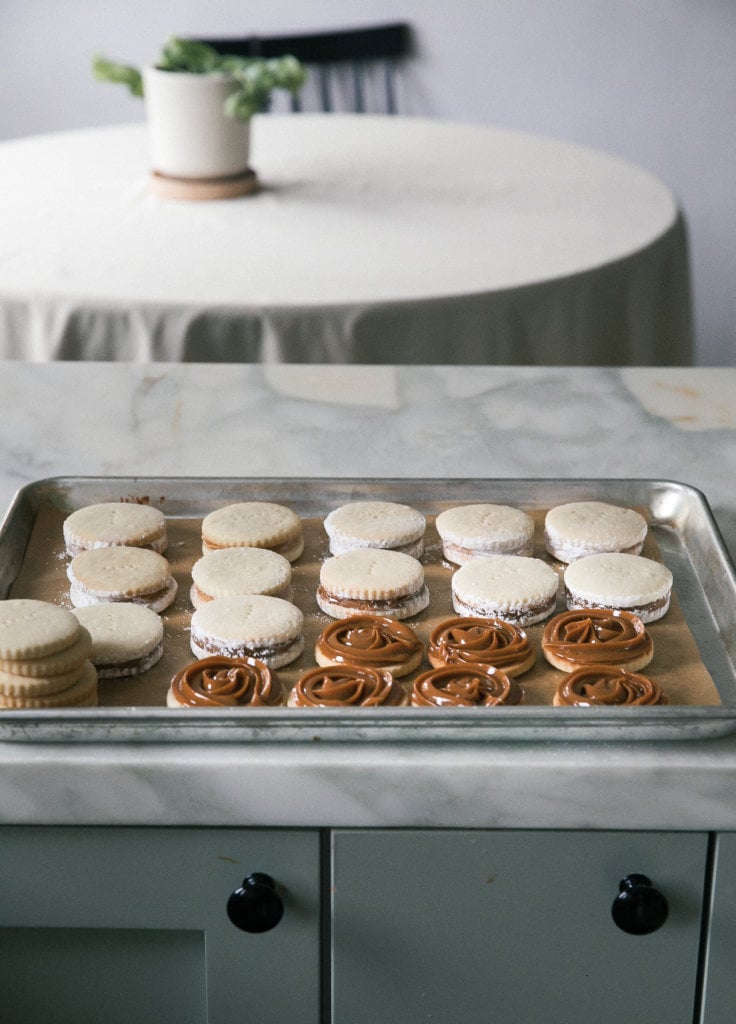
Tips for Success
Dulce de leche Shortcuts: The brand La Lechera sells dulce de leche already in the can. I like to add a pinch of cinnamon and cloves to the can and mixing it in. This is a super quick and easy shortcut and guess what: they’re still amazing
Cookie Dough Becomes Too Soft: If the dough becomes to soft, slide the parchment with the cookie dough on top onto a cutting board. Transfer it to the freezer to chill for 5 minutes. This will make them a lot easier to handle.
To Store the Alfajores : These are best stored in an airtight container at room temperature.
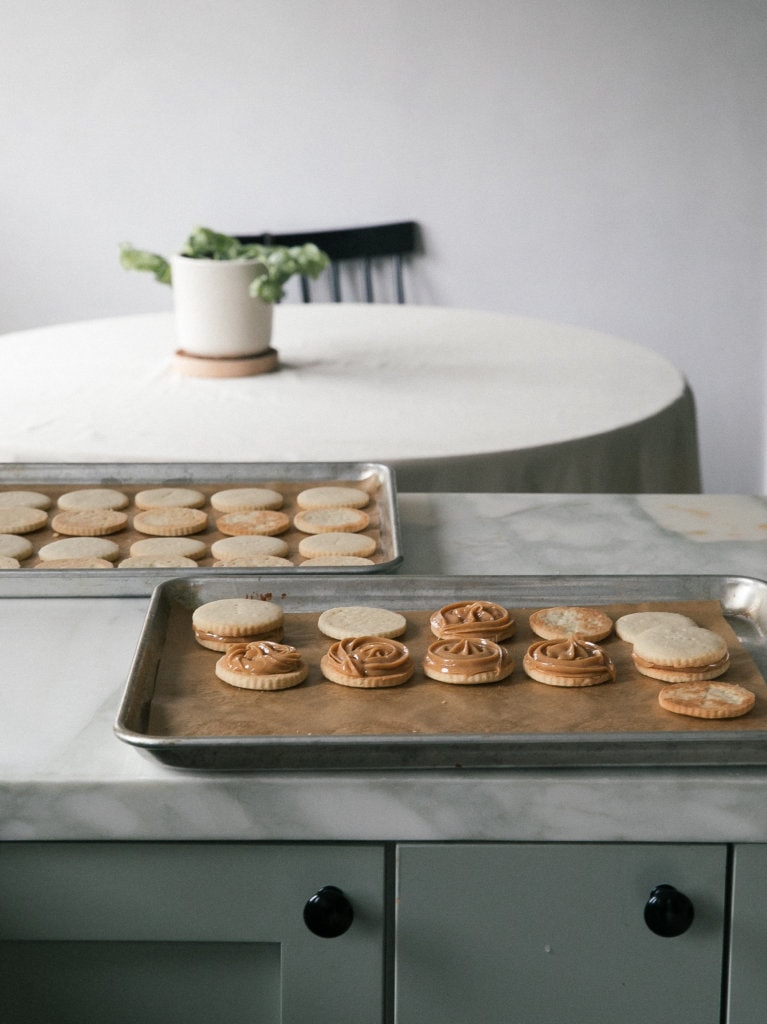
Recipe FAQs
While “alfajores” doesn’t have a direct translation, many believe that “alfajor” is derived from the Arabic word “al-hasu” which means “filled.” This would make sense considering these cookies are indeed filled!
While popular in South America, they are from Spain with origins in Middle East. Story has it that the Moors brought the Alfajor over during its rule over Spain which spanned close to 800 years.
The manjar blanco/dulce de leche can be made up to 3 days in advance and kept in an airtight container in the fridge.
To temper manjar blanco, allow to come to room temperature for 2 hours. OR, you can place the container (sealed) in a bowl of warm water to temper.
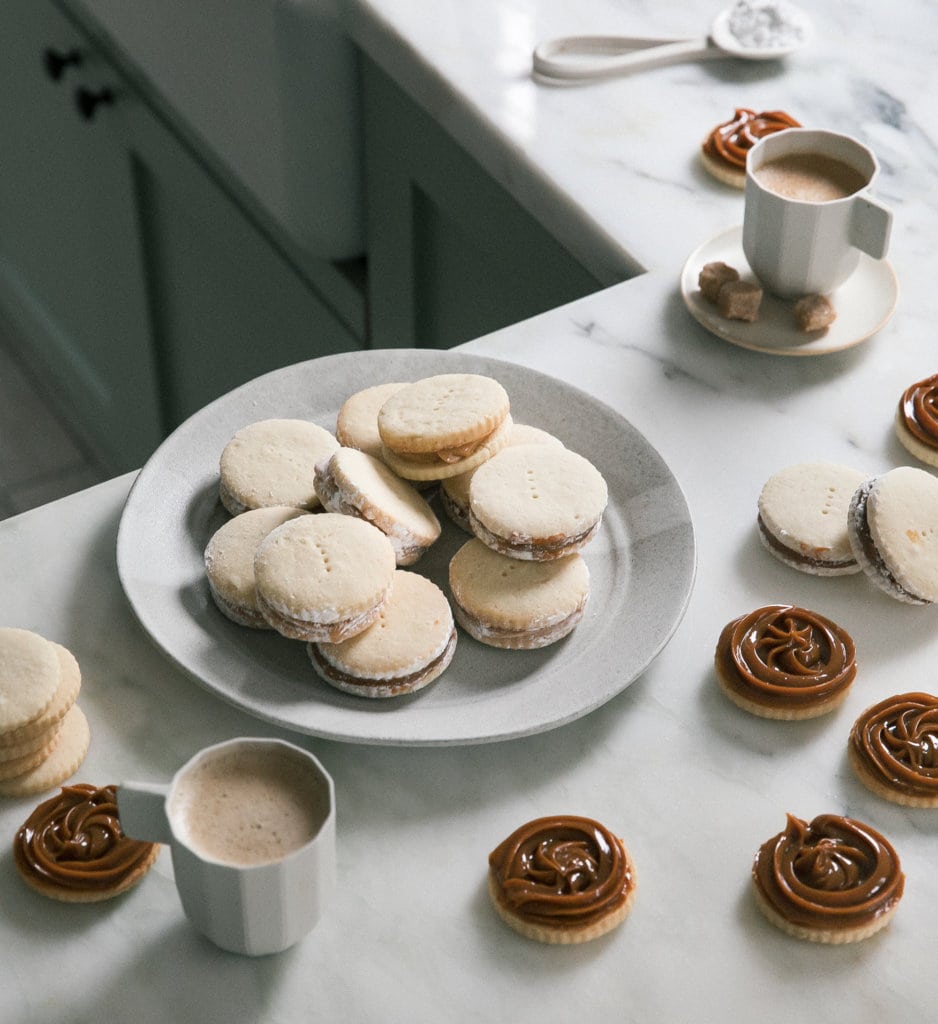
More Peruvian Recipes
Video for Alfajores
If you tried this Alfajores Recipe or any other recipe on my website, please leave a 🌟 star rating and let me know how it went in the 📝 comments below. Thanks for visiting!
Alfajores Recipe
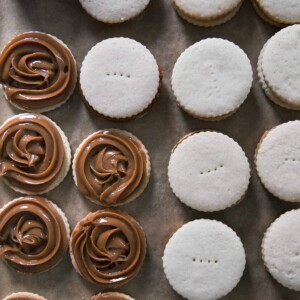
Equipment
- 1 (half sheet) baking sheet
Ingredients
Manjar Blanco
- 1 (14-ounce) can sweetened condensed milk
- 1 cinnamon stick , (optional)
- Pinch kosher salt
Vanilla Shortbread Cookie:
- 1 3/4 cups all-purpose flour
- 1/2 cup corn starch, sifted
- 1/2 cup powdered sugar, sifted
- 1/4 teaspoon kosher salt
- 1 cup unsalted butter, at room temperature
- 2 teaspons vanilla extract or vanilla paste, (optional)
- 1 large egg yolk, (optional)
Assembly:
- 1/3 cup powdered sugar, sifted
Instructions
To Make the Manjar Blanco:
- Preheat the oven to 400 degrees F. Grab a small baking dish, a piece of foil and another larger baking dish that the smaller baking dish fits in.
- Pour the sweetened condensed milk into the smaller baking dish and cover it with foil. Place the smaller baking dish in the larger baking dish and fill half way with water. We're going to be creating a water bath for the sweetened condensed milk to cook in. Transfer to the oven to bake for 1 hour to 1 hour and 15 minutes. You may need to re-fill it at the 45 minute mark since the water can evaporate.
- Remove it from the oven and allow it to stand for about 15 minutes. This will cool it down so it's easier to handle.
- Remove the foil from the baking dish and remove it from the water bath. Discard the cinnamon stick and pour the dulce de leche/manjar blanco into a glass or stainless steel bowl. Whisk it until it's smooth. This happens pretty quickly.
- You can do this the day before if you like. This stays good in the fridge in an airtight container for up to two weeks. To temper the dulce de leche, transfer the container (with it's lid on and all) to a bowl with warm water. This will allow the dulce de leche to become smooth since the cold temperature from the fridge stiffens it quite a bit.
To Make the Cookies:
- To the medium bowl, whisk together the all-purpose flour, sifted corn starch, powdered sugar and salt. Set aside.
- To the bowl of a stand-up mixer (you can also use a medium bowl and an electric hand-mixer), add the butter and vanilla paste or extract. Beat until smooth. Next, add the egg yolk and mix just until incorporated.
- Add all of the flour mixture and slowly mix it together (being sure not to go too quickly or else the flour will fly out of the bowl), until combined, about 1 minute.
- Scoop the dough out of the bowl and form it into a ball. Place it in the center of a sheet of plastic wrap and press it into about a 2-inch round. Wrap it tightly in plastic wrap and transfer to the fridge to chill for about 1 hour.
- Preheat the oven to 350 degrees F.
- When it’s done resting, in the fridge, transfer the dough to the center of a sheet of parchment. Place a sheet of parchment on top and roll it out slowly. (If it’s too cold, let it come closer to room temperature, about 10 minutes.) Roll it out until it’s about 1/2 to 1/4-inch thick.
- Using a 3-inch cookie cutter, stamp out cookies, having them as close to each other as possible. Transfer the cookies (I found it easiest to use an offset spatula to pick up the cookies) to a parchment-lined baking sheet, spacing them about 2-inches apart. Transfer to the fridge to chill for about 10 minutes. Repeat until you work your way through all of the dough. I rerolled the dough about 2 more times.
- Score the tops of the cookies with a tines of a fork. Transfer to the oven to bake for about 11 to 13 minutes, until the cookies are a bit firm to the touch but have zero color on the edges. These cookies are baked just until set. Allow to cool on the baking sheets until room temperature.
To Assemble the Alfajores:
- When the cookies have cooled, flip half of the cookies on their opposite side. Transfer the manjar blanco to a piping bag with a piping tip attached (this part is optional). Pipe a round of manjar blanco on all of the cookies facing their opposite sides.
- Alternatively, you could also spoon the manjar blanco onto each of the cookies and smooth it out (gently because the cookies are delicate) using a butter knife.
- Top each of the cookies with another cookies and lightly press it down. Roll the sides in the sifted powdered sugar. Store in an air-tight container or bag for up to 3 to 5 days.
Video
Notes
- The dough needs to be refrigerated for about an hour or up to 3 days. It works much better when the moisture is evenly distributed throughout (what resting in the fridge does).
- You can use store-bought dulce de leche. It might be kinda lumpy straight out of the jar and/or can so be sure to whisk it until it’s smooth.
- Different cookie cutters: You can make mini alfajores by using a 1 1/2-inch cookie cutter. For a larger size, use a 3-inch cookie cutter.
- These are best stored in an airtight container at room temperature.
- The manjar blanco/dulce de leche can be made up to 3 days in advance and kept in an airtight container in the fridge.
- To temper manjar blanco, allow to come to room temperature for 2 hours. OR, you can place the container (sealed) in a bowl of warm water to temper.
Nutrition
Nutrition information is automatically calculated, so should only be used as an approximation.
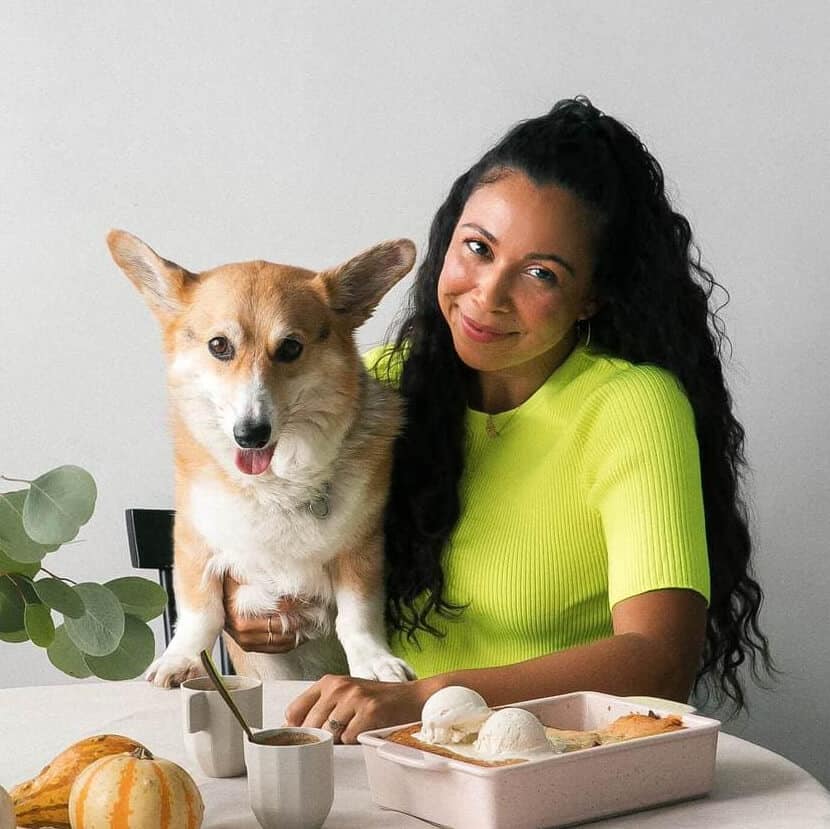
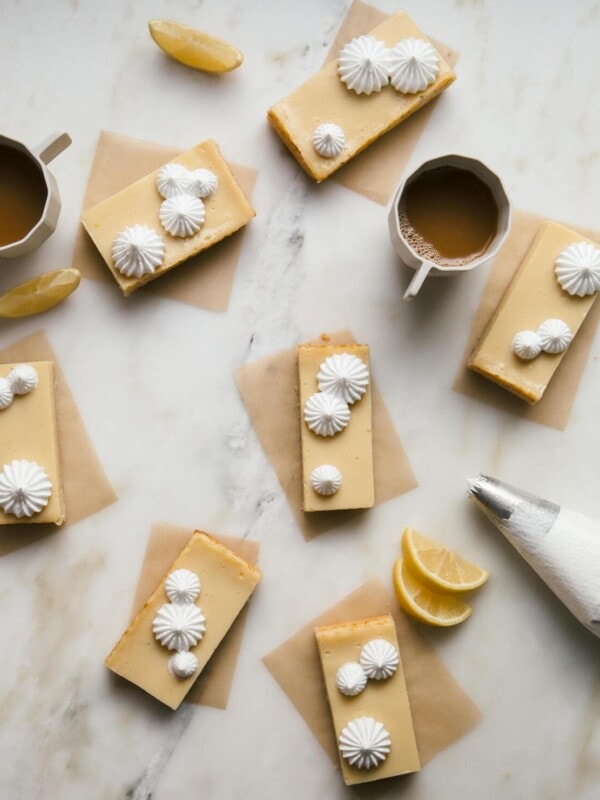
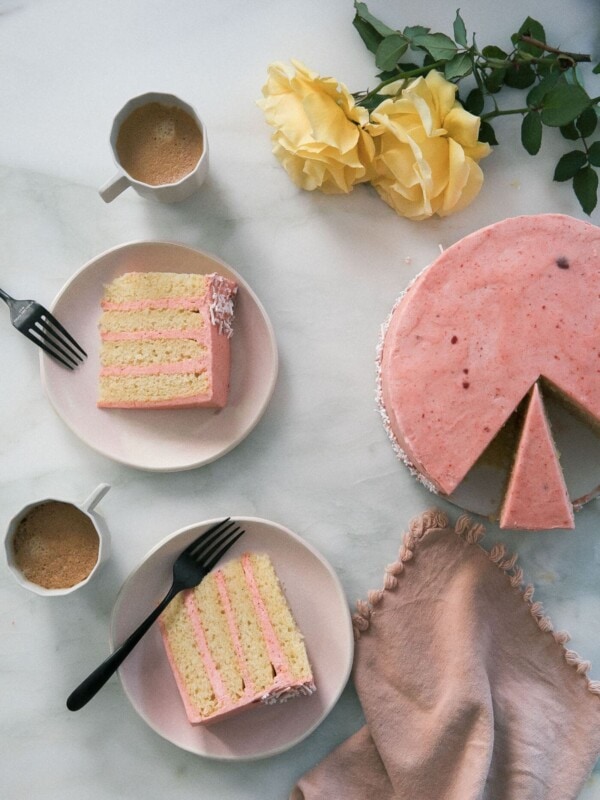
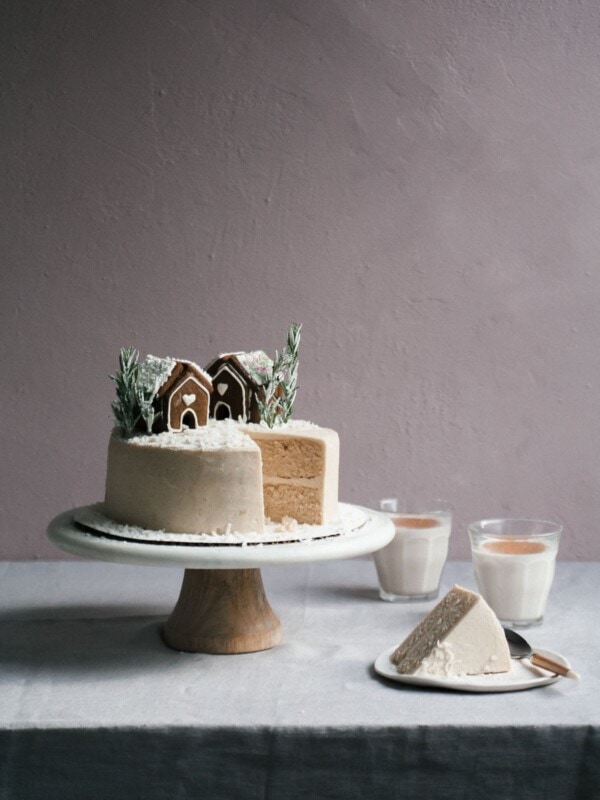
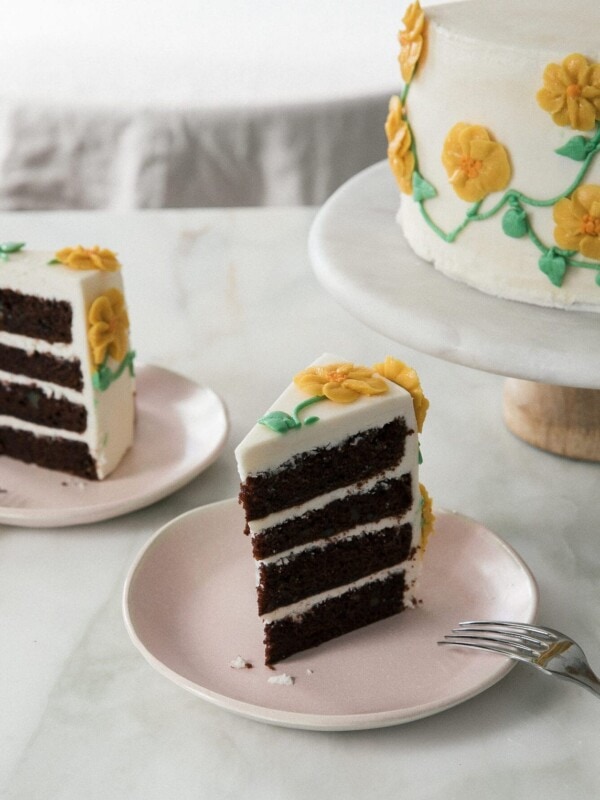








I am gluten intolerant so I substituted 1-1 gluten free flour and I think that was a fatal mistake. My cookies did not bake, they basically turned into a mush. It’s a shame, this recipe looks great but I probably won’t make it again because it doesn’t translate well to become gluten free.
ahh bummer that it doesn’t work with gluten-free floud 🙁
Ok, so I realized I messed up and forgot to add the confectioners sugar lol. I remade it and it worked out great!
wow this is a resilient cookie then lol!
This is my go to recipe for alfajores 🙂 These are just like my grandma’s that she used to make us in Peru. I’ve made your recipe loads of times and I can’t recommend it enough to friends!!
awww i love this!
They turned out so well! Just wish I would’ve made more so they could’ve filled the jar. I made it with the store bought dolce de leche and was pretty great. Also, the dough didn’t look like it was forming at first, like it was just crumbly, but I just kept beating it and it formed a dough. Great recipe!
I am Peruvian Argentine (Peruvian father, Argentine mother , born in Argentina, raised in Peru) and I lived in Colombia for four years. In Colombia the “manjar blanco” is called “arequipe” not Arequipa. Arequipa is a department and capital city of the same department (state) in Peru.
I am glad that you called it “manjar blanco”, I feel bad when people know the name given by the country that put it in the international market first. I also get infuriated when I see “quinua”, the real name of the staple written “quinoa”. Just because the Americans make it popular in the world. Quinua was used by the indigenous people in Peru since the time of the Tawantinsuyo ( Inca Empire). I will try your recipe of “alfajores”.
I love these cookies and have made them for so many friends. I’ve used canned dulce de leche and also made my own a couple times. But it usually always comes out a little on the thin side. Do you have any tips for thickening?
This looks amazing! Really want to try and make them! I don’t have a mixer annoyingly – do you think it would be possible to mix the dough by hand?
yes so i think you definitely can do them by hand. i would use your hand as the mixer in the beginning and then knead it until it all comes together. might take a bit of muscle strength but definitely doable!
These look so good! My years spent traveling to Chile on business taught me to LOVE anything with Dulce de Leche. I can’t wait to try them!
I just made it here in Brazil with delicious coffee flavoured doce de leite and it’s just delicious. I also recommend infusing some tonka beans in the dulce de leche, it also works wonders. Congratulations on the recipe! I used regular sugar instead of confectioner’s in the dough and it worked just fine.
love hearing this! also happy that regular sugar worked. yay!
These sound incredible. I’ve been craving them since I saw you make them on Instagram. I hope I can find time to make them soon.
Made these last night and loved them! Used cajeta from Mexico, it’s a goats milk type majar blanco! Are the calories listed per cookie? I’ll have to beware of how many I eat haha